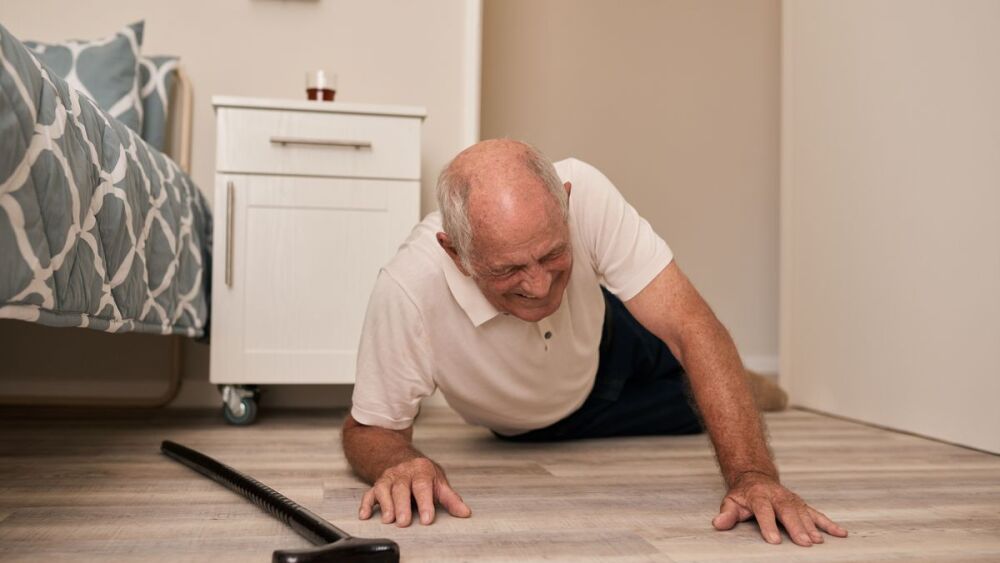With more than 69 million Baby Boomers in the U.S., 911 calls to treat older patients are a frequent occurrence and guaranteed to rise.
When you’re called to help a geriatric patient with a medical emergency or traumatic injury, here are five ways to facilitate a safe and successful patient contact.
1. Expect age-related changes
As an age-related decline in the function of our organs alters our body’s response to illness and injury, it is important to know what kinds of changes to expect and how they may affect how our patientd present.
After the age of 30, our organ systems lose 1% of function per year, meaning the body is less able to compensate for shock. With depleted calcium levels, our bones can break easier and simple burns, lacerations and abrasions can cause greater harm, as our skin dermis thins by 20% and perfusion of blood to the extremities decreases. Additionally, as our brain tissue shrinks, a void is created in our cranial vault, so head injuries are more lethal and can take days to develop.
These, and other anatomical and physiological changes mean that EMS providers need to increase our index of suspicion with elderly patients. Vague and non-specific complaints and traumatic injuries with a low-energy mechanism of injury can have life-altering effects on an older patient.
2. Pay extra attention to medications
It is quite common that geriatric patients can forget to take their meds or take the wrong dose. Therefore, along with asking patients about medications, it is also important to locate the prescription bottles, perform a pill count (if indicated) and bring the medications to the ED with the patient.
In addition, study up on commonly prescribed medications, their side effects and how drugs may interact, or potentiate, with one another. If a patient is taking blood thinners and has a head injury or blunt trauma to the torso, be extra alert for internal bleeding. Beta-blockers, such as propranolol and carvedilol, taken for high blood pressure, can block the body’s response to shock, meaning your patient may not have an elevated heart rate when you take a set of vital signs.
Lastly, since old age causes patients to metabolize medications more slowly, start with a low dose when administering pain medications and titrate up. You can always give your patient more pain medication, but it’s more difficult to manage a patient who is suddenly altered or not breathing due to an inadvertent overdose.
3. Don’t stop at the chief complaint
As elderly patients often have multiple medical problems and co-morbidities, don’t stop your detective work at what they believe is their chief complaint. This complaint may, or may not, be their most life-threatening condition and it is up to you to form your own informed, provider impression.
For example, you might have been dispatched for a simple “fall” that could’ve been caused by a stroke or syncopal (fainting) episode. An altered patient with low blood sugar who is found outside might also be suffering from hypothermia. Or, you could discover in your assessment that a patient complaining of a urinary tract infection is also in the throes septic shock.
Learn more
Geriatric slips, trips and falls: 3 assessment considerations
On-scene considerations for EMS assessment for evaluating lift-assistance calls and making transportation decisions for geriatric fall patients
Lastly, it’s not uncommon to be called to an elderly patient who has multiple life-threatening conditions all going on at once. I remember when I worked as a paramedic in Yellowstone, my patient had a major GI bleed and COPD exacerbation, and she’d also overdosed on her Valium. On these calls, it’s important to triage your treatment, focusing on the most critical life threat first and then addressing the others.
4. Be alert for elder abuse and depression
As EMS providers, it is our responsibility – and privilege – to be the patient’s best advocate. When you’re called to the home of an elderly patient, pay attention to the condition of the living space and what family members or healthcare providers are caring for your patient. Are there any signs of abuse or neglect, such as an empty fridge; half-eaten food scattered about; a delay in seeking care; or bruises in multiple stages of healing? Does the story you’re given match the illness or injury and are the patient’s medications being given at the proper time and dose?
Also, if the patient is living alone, they can easily feel isolated, depressed or suicidal at the loss of loved ones, their decreasing health or financial situation. If you expect elder abuse or depression, it is important to notify proper authorities once you arrive at the hospital.
5. Have the courage to care
Since senses such as sight and hearing can be dulled in an elderly patient, communication can be difficult, but don’t let that stop you from making the effort to connect and communicate. In addition, many geriatric patients fear a loss of independence and being moved into a nursing home so they may not want to go to the hospital. However, it is important to explain your assessment findings, treatment plan and why it is in their best interest that they see a doctor.
Lastly, once you’ve stabilized the patient and taken care of the medical side of things, don’t be afraid to engage your elderly patient on a personal level. In many cultures around the world – and I hope in ours as well – elderly people are revered for their life experience and wisdom. Don’t be afraid to ask about their life. Where did they grow up? What did they do for work? Where was the most amazing place they visited?
Suddenly, the person sitting on the gurney next to you is no longer simply a patient, but a person who’s likely lived an amazing life and will be eager to share it with you. As you meet military veterans, teachers, world travelers or former professional athletes, you’ll be amazed at the stories you hear.
This article, originally published Jan. 12, 2017, has been updated.



